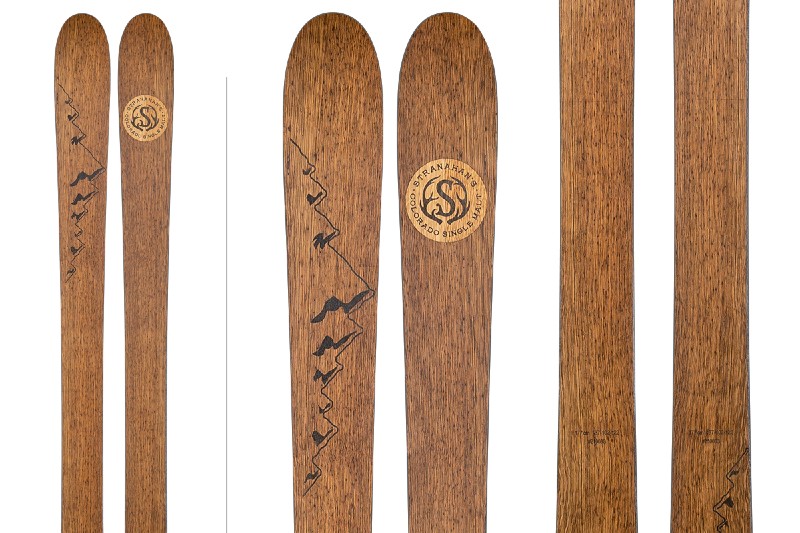
Ever skied on a whiskey barrel? Thanks to a collaboration between Stranahan Whiskey and Wagner Custom Skis, now you can.
The two premium Colorado brands teamed up for the second time in 2021 to design and build a one-of-a-kind pair of snow skis. This collaboration meshes Wagner’s modern ski tech with Stranahan white oak whiskey barrels to create a classic set of wood skis. These snow runners feature the same white oak where Stranahan’s single malts age and an inlay from an actual used cask with Stranahan’s emblem and a Rockies silhouette stamped on each ski.
There have been brewery and ski partnerships before, but this might be the first collaboration using the actual containers that whiskey was made in, according to owner and CEO Pete Wagner.
“It was a pretty unique process,” Wagner said. “Working with barrel wood was a pretty tough challenge. To attain structural integrity, we had to get into the heart of the boards.”
Wagner indicated that aging made drums a lot more fragile on the outside than on the inside. This is due to white oak wood containing tiny structures in their xylem (vascular tissue that transports water and dissolved minerals absorbed from the roots to the rest of the plant) called tyloses. Absent from red oaks, tyloses cut off xylem regions to stop infection from spreading. Hence, white oak is used for making wine and bourbon barrels because it keeps from leaking its contents.
Wagner and his engineers had to dig into the slats to find where the most giving wood was. While topsheets are made out of the Stranahan’s white oak, they’re finished by hand with a satin polyurethane clear coat, which results in a modern, waxable ski.
Related Guides
Of course, these limited edition boards are fully customizable, like every other Wagner product. Upon purchasing a pair of Wagner Skis, a ski designer walks you through Wagner’s proprietary “Skier DNA” fitting technology. Together, Wagner personalizes length, width, sidecut shape, tip and tail shape, camber and rocker, stiffness, and flex pattern. Adding in another custom company like Stranahan just adds to the Wagner experience, Wagner told SGB Media.
“We sold several sets, but we did it more because we thought it was a cool story and a fun challenge.”
2021 is the second time that Stranahan and Wagner collaborated, in part because COVID restrictions hampered 2020 promotional efforts like release parties and events. This likely won’t be the last collaboration for the customized ski company either. Wagner’s is discussing a similar collaboration with the Telluride Brewing Co. and Telluride Distillery.
Stranahan-Wagner custom skis starting $2,295. Reach out to wagnerskis.com to set up a time to design your set of custom Stranahan’s Barrel Skis.
Read More: A Beginner’s Guide to Backcountry Skiing



